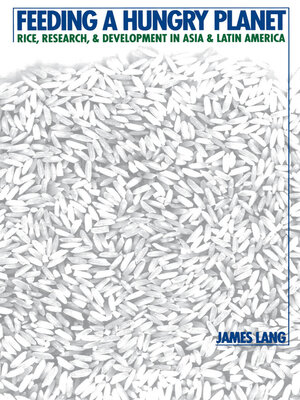Feeding a Hungry Planet
ebook ∣ Rice, Research, and Development in Asia and Latin America
By James Lang

Sign up to save your library
With an OverDrive account, you can save your favorite libraries for at-a-glance information about availability. Find out more about OverDrive accounts.
Find this title in Libby, the library reading app by OverDrive.



Search for a digital library with this title
Title found at these libraries:
| Library Name | Distance |
|---|---|
| Loading... |
Rice is the food crop the world depends on most. In Feeding a Hungry Planet, James Lang demonstrates how research has benefited rice growers and increased production. He describes the life cycle of a rice crop and explains how research is conducted and how the results end up growing in a farmer’s field. Focusing on Asia and Latin America, Lang explores lowland and upland rice systems, genetics, sustainable agriculture, and efforts to narrow the gap between yields at research stations and those on working farms. Ultimately, says Lang, the ability to feed growing populations and protect fragile ecologies depends as much on the sustainable on-site farm technologies as on high-yielding crop varieties.
Lang views agriculture as a chain of events linking the farmer’s field with the scientist’s laboratory, and he argues that rice cultivation is shaped by different social systems, cultures, and environments. Describing research conducted by the International Rice Research Institute in the Philippines and by the International Center for Tropical Agriculture in Colombia, he shows how national programs tailor research to their own production problems. According to Lang, the interaction of research programs, practical problem solving, and local extension efforts suggests a new model for international development.
Lang views agriculture as a chain of events linking the farmer’s field with the scientist’s laboratory, and he argues that rice cultivation is shaped by different social systems, cultures, and environments. Describing research conducted by the International Rice Research Institute in the Philippines and by the International Center for Tropical Agriculture in Colombia, he shows how national programs tailor research to their own production problems. According to Lang, the interaction of research programs, practical problem solving, and local extension efforts suggests a new model for international development.







